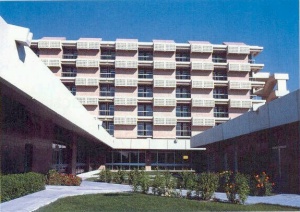 DOHA: The Hamad Medical Corporation’s Emergency Department (ED) is set on major expansion projects in terms of infrastructure design and treatment procedures. The two projects — one expected to be completed in mid January 2010 and the other beginning by the end of March 2010 — aim at easing the patient access to quality health care and reducing over crowding at the department.
DOHA: The Hamad Medical Corporation’s Emergency Department (ED) is set on major expansion projects in terms of infrastructure design and treatment procedures. The two projects — one expected to be completed in mid January 2010 and the other beginning by the end of March 2010 — aim at easing the patient access to quality health care and reducing over crowding at the department.
With an average of 1,500 cases received at the Emergency Department every day, it is manifolds busier than most emergency unit in the West. Senior officials have been trying to tackle the problem of over-crowding. Recently, the hospital had launched a controlled access system, which had helped to clear-up the corridors at the emergency department making transit easy for both the patients and the doctors.
In mid January 2010, the ED treatment area will be expanded incorporating the present ED administration section into it. The department will also introduce a new management system.
“The new process called the See and Treat System has been proved to be the best in management of high volume and better quality. All patients can be seen by experienced doctors in all-new purpose built environment promoting smooth and rapid flow of patients. The project will have pharmacy, cashier, registration, waiting room, 16 assessment and treatment rooms. We also hope to have X-Ray facility,” Dr Khalid Abdulnoor (pictured), Senior Consultant at ED, told The Peninsula.
The new additions will include a casting room, on-site orthopaedic facility, completely separate section for the females and a separate H1N1 clinic. ED has at present only four or five treatment rooms which will be increased to 16.
For the first time, HMC ED will have an on site orthopaedic doctor and a casting room. At present, fracture patients once they are plastered will have to go to HMC annex at Salata for orthopaedic follow-up. In majority of the cases the medical records and follow-up papers will not be available at the annex leaving the patient in trouble.
In line with the cultural requirements, the female section of the ED will be made completely separate as at present, mixing of patients are inevitable in some areas. “Currently the women have separate registration and entry. The triage is small with no privacy and has only two small areas for their initial assessment by the doctors. The new system will increase the triage from two to three and the treatment rooms from four to eight. Separate H1N1 facility will also be made,” he said.
In addition, the Eye room and ENT rooms which are further behind the critical areas will be shifted to facilitate all.
By the end of March, the ED will start two and half year renovation work of the present location resulting in an all-new design and look. “It will have a modern look and work on an evidencedbased mechanism. It will bring in the senior doctors to the first line of emergency care rather than at the end. It will have an increased capacity, staff, diagnostics, expanded trauma room and radiology, pharmacy and laboratory facilities,”
The plan also includes facility for a 60-bed Clinical Decision Unit for acute care. The unit will provide inpatient level care to patients staying up to 48 hours and include private rooms, monitoring beds and procedure rooms. This will help to reduce the bed crisis in both the Emergency and the main hospital.
“We just want to give the best patient care and move away from keeping them wait for long time. The projects will not compromise the quality of care but will speed-up patient flow. This will also reduce hundreds of patients waiting for different facilities,” he said.
